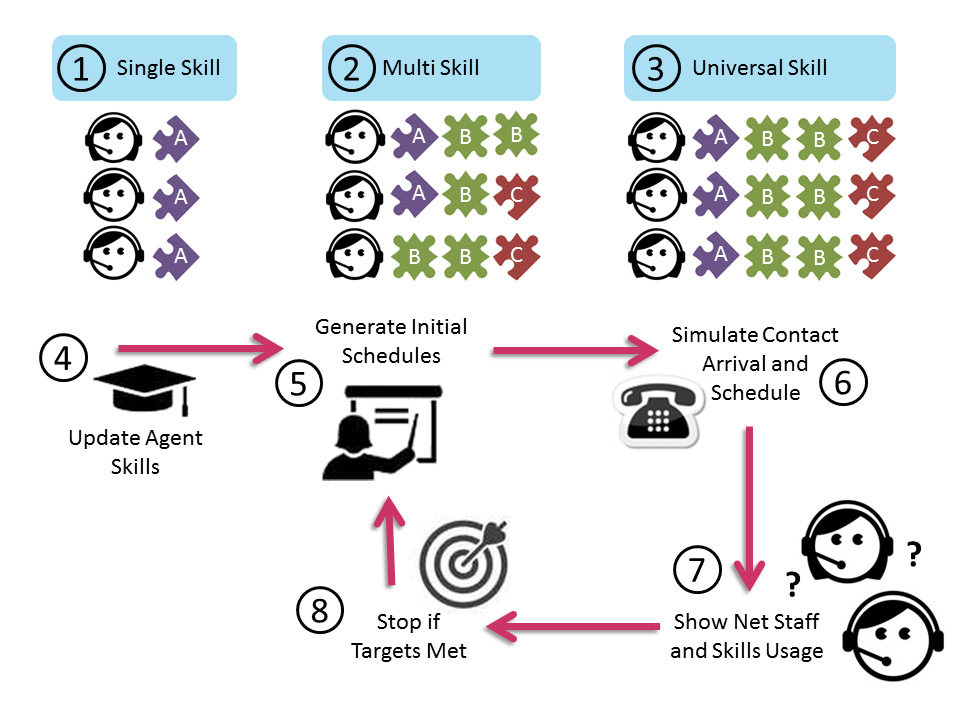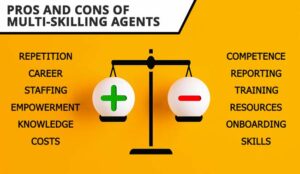The problem:
Forecasting in a multi-skilled contact centre is a challenge that most organisations face as they try to optimise skill sets to handle multiple contact types.
The solution:
Use the simulation capabilities of your WFM application to create the most efficient set of multi-skilled schedules and fine-tune these against your contact centre environment.
How it works:

- The challenge with multi-skilling is being able to calculate the required staffing in each skill set that optimises the resource and achieves the service levels. Only WFM can provide this efficiently . The WFM application will be able to create the best fit schedules for the contacts.
- There are two types of multi-skilling. The first is where the employee is trained to handle a number of contacts in the contact centre but not all. This is a very common way to optimise resources and is sometimes known as partial skilling.
- The second method is universal skilling, whereby the employees are 100% multi-skilled and can handle all contact types. The level of multi-skilling in the contact centre depends on a number of considerations. Depending on the industry, product type and complexity of interactions, it may not be cost efficient to train everybody in all skills. There is a training and admin overhead to keeping all staff trained. Consideration also needs to be given to the employee – is it really feasible to answer multiple contact types?
- The first step is to ensure that employee skills are up to date and reflect the telephony platform.
- The schedules are then created to provide an initial view of the coverage and utilisation of skills.
- The next stage is to undertake simulation. Simulation generates staff plans that take into account the rules on how your contacts are routed by site, as well as individual agent skills, skill levels, work preferences and availability.
- Simulation calculates detailed skill requirements for every interval during the day for each contact type. The simulation program evaluates how well schedules handle projected contact volumes, and then uses that information to make refinements to best fit goals for service level, average speed of answer (ASA) and agent occupancy.
- The number of times the simulation is run can be configured based on achieving defined targets.
The benefits:

David Evans
The provisions of multi-skilling and simulation improve the efficiency of the contact centre. Benefits are dependent on different factors, but it is not unreasonable to see a 15% improvement in schedule efficiency and coverage. This allows resources to be used elsewhere.
From an employee perspective, multi-skilling provides more variety throughout the day and can lead to better job satisfaction and improved staff retention rates.
An example of a company using this solution is Sodexo Property Solutions.
This technology toolkit was provided by David Evans, WFO Consultant, Business Systems.
Click here to download our Monthly Forecasting Excel Spreadsheet Template
Author: Megan Jones
Published On: 16th Oct 2013 - Last modified: 18th Aug 2025
Read more about - Technology, Average Speed of Answer (ASA), Business Systems, Forecasting















